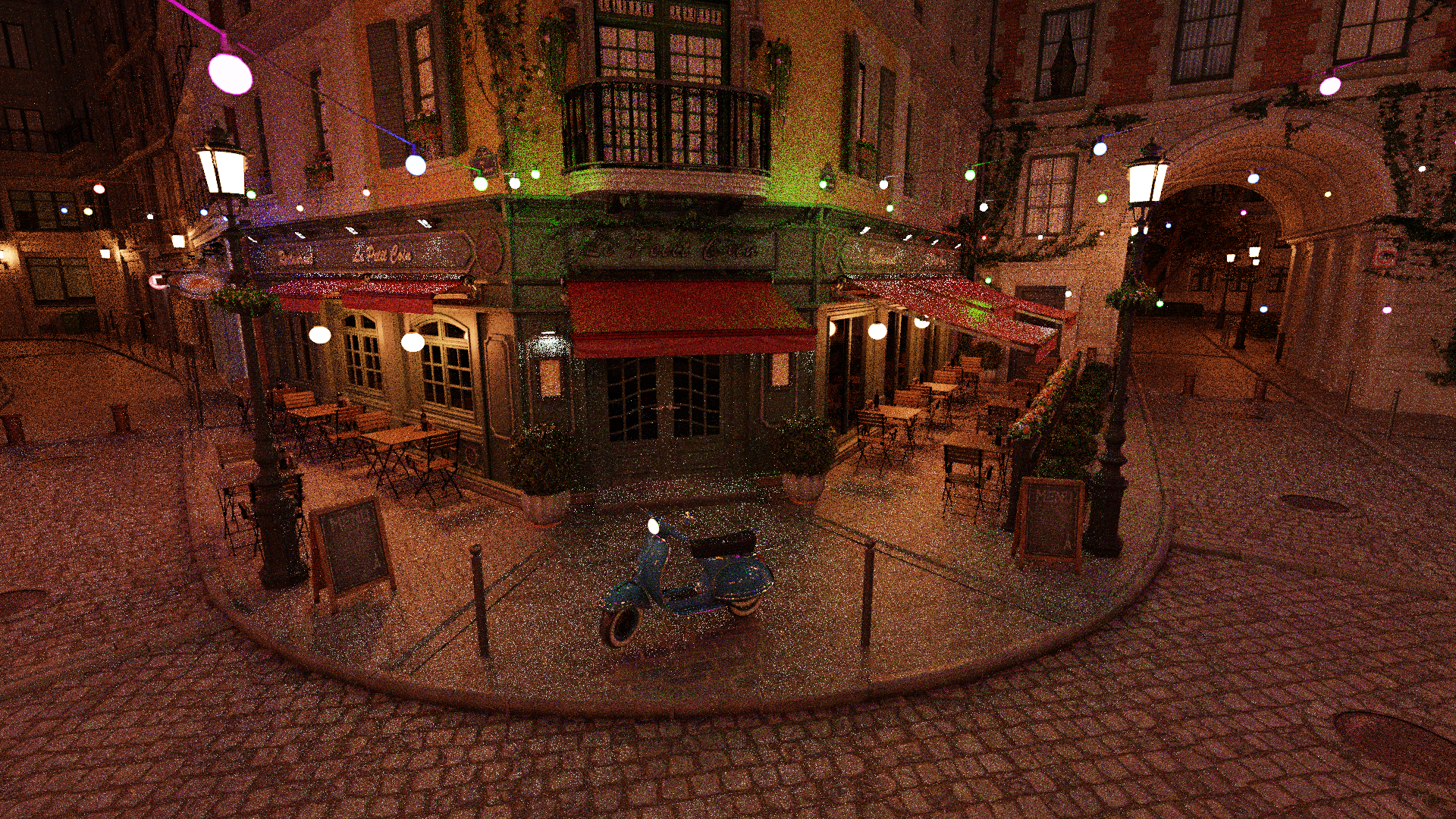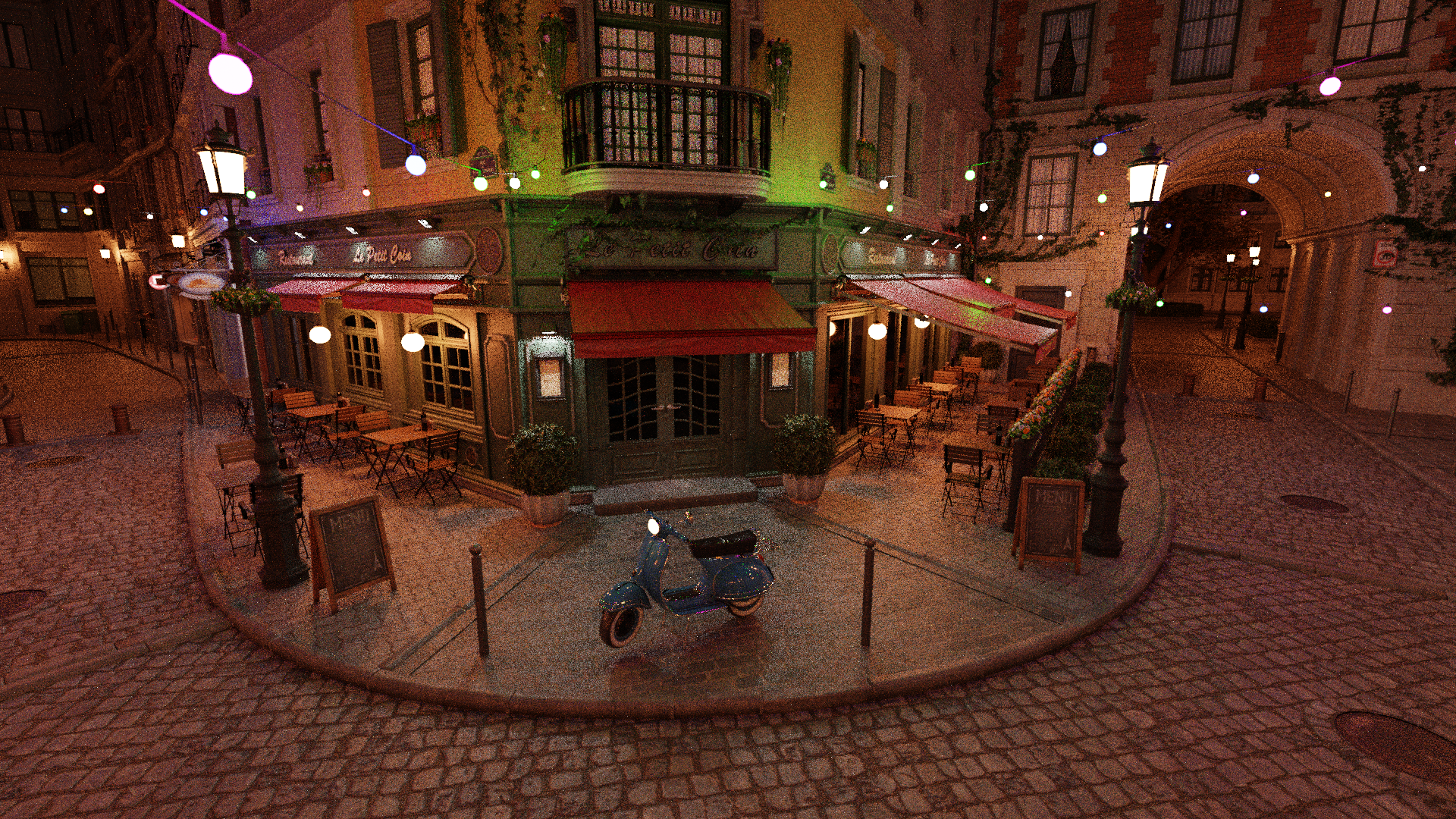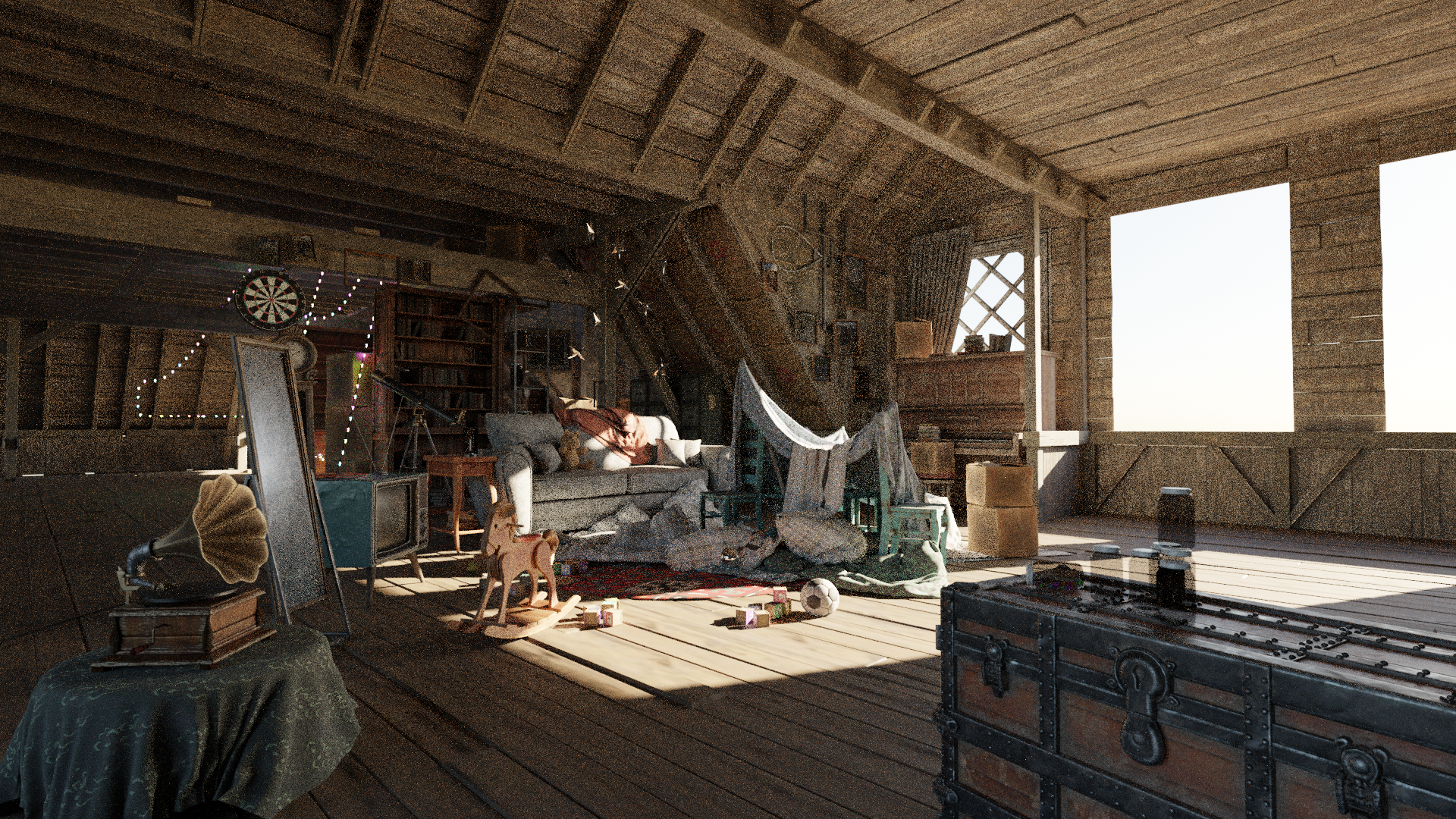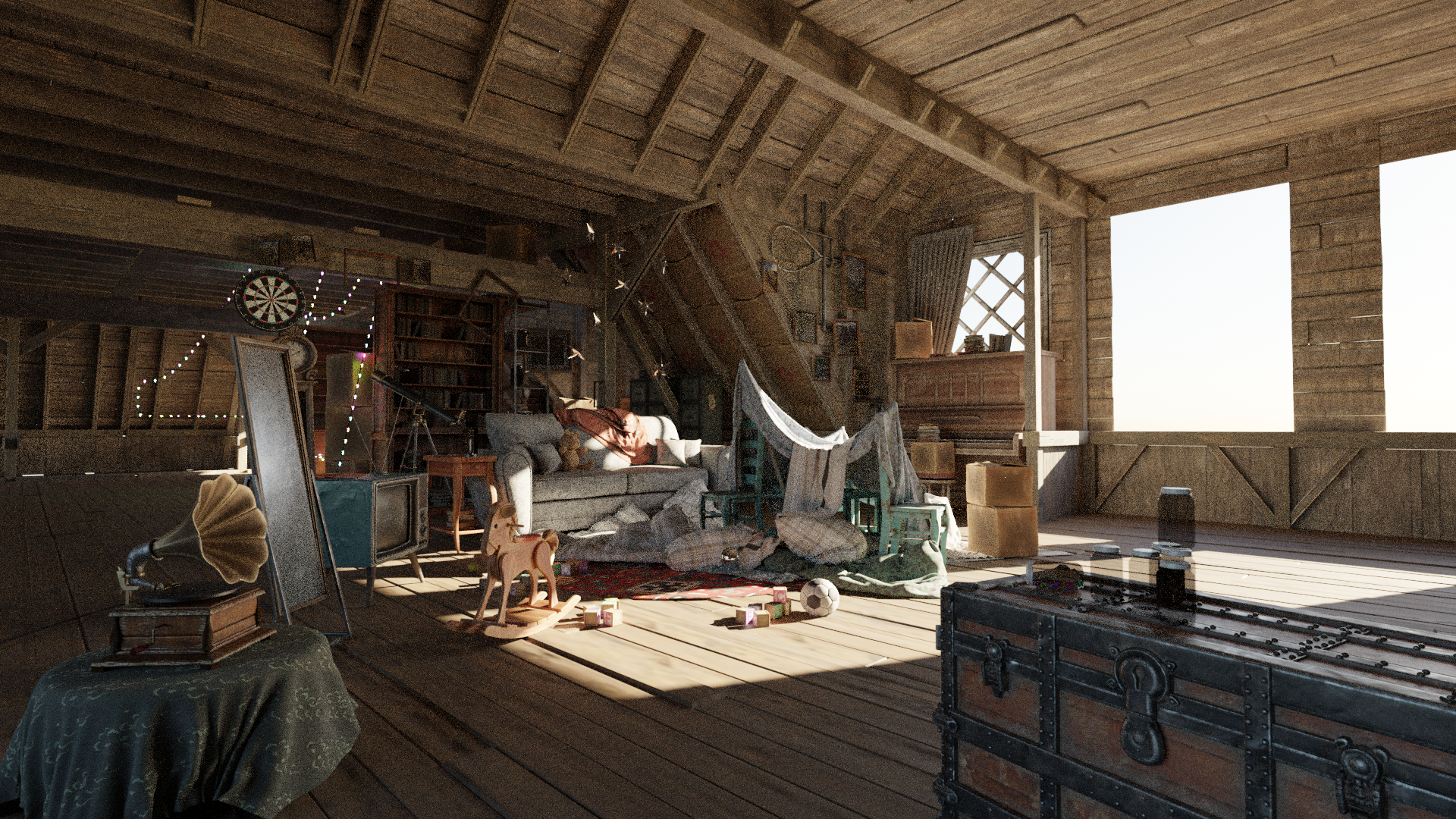Cycles¶
Light Sampling¶
Cycles now uses a light tree to more effectively sample scenes with many lights. This can significantly reduce noise, at the cost of a somewhat longer render time per sample.
- Light tree sampling is enabled by default in new scenes. It can be disabled in the Sampling > Lights panel.
- If the light tree yields different render results, the most likely cause is light clamping. Clamping is a biased method that depends on the sampling strategy. Generally if the light tree works well, there will be less clamping and the render will be closer to the unbiased result.
- The light tree works best in scenes with physically correct lighting, that is no custom falloff or ray visibility tricks. These may interfere with heuristics used in the light tree.
- Materials with emission now have a new Emission Sampling setting, replacing the previous Multiple Importance Sample toggle. Auto is the new default, and uses a heuristic to estimate the emitted light intensity to determine of the mesh should be considered as a light for sampling. For single sided emitters or closed meshes, setting this to Front faces only can reduce noise with the light tree.
The light tree is currently disabled for AMD GPUs on Windows, Linux and macOS. We hope to resolve this in the next release.
| No Light Tree | Light Tree (equal render time) |
|---|---|
 |
 |
 |
 |
Scenes CC-BY 4.0 Amazon Lumberyard and CC-BY 4.0 NVIDIA.
Open Shading Language¶
OSL can now be used with OptiX on the GPU, in addition to existing support with CPU rendering.
There are some limitations currently, in particular for image texture, AO and bevel nodes. See the OSL documentation for details.
Apple Metal¶
GPU rendering performance on Apple devices was improved, without various incremental changes and tunings.
The big change is kernel specialization for shaders. This works transparently: rendering starts quickly with a generic shader and optimized shaders are compiled in the background and used when ready. This optimization can be configured in the preferences.
Changes¶
- Improved adaptive sampling for overexposed scenes, reducing render
time by taking into account absolute light intensity.
(857bb1b)
This can negatively affect some scenes where compositing or color management are used to make the scene much darker or lighter. For best results adjust the Film > Exposure setting to bring the intensity into a good range, and then do further compositing and color management on top of that. Note that this setting is not the same as Color Management > Exposure. - Spot lights support for non-uniform object scale. (b454416)
- Area lights with ellipse shape and spread have much reduced noise. (53ef52f)
- Fix Anisotropic BSDF with Beckmann roughness using isotropic sampling (eb657633ed)



- The shadow render pass was removed, as its design was incompatible with the light tree. In many case shadow catcher passes can be used instead. (0731d78d)
- The Diffuse and Glossy Color passes now account for the color of additional closures (e.g. the Principled BSDF's metallic and sheen components), ensuring that the contribution is split into a color component (in the Color pass) and a color-independent light component (in the Direct/Indirect passes) as expected (73000c792d)